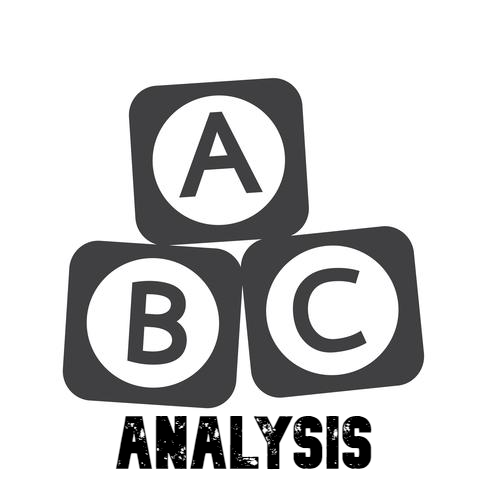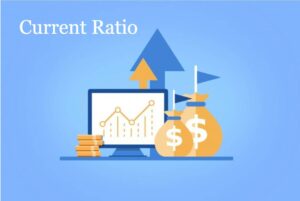ABC analysis in cost accounting is an accounting methodology that assigns cost to activities rather than products or services. This helps resources & overhead costs to be more accurately assigned to products & services that consume them.
Meaning and definition of ABC analysis in cost accounting
ABC is an accounting methodology that assigns cost to activities rather than products or services. This helps resources & overhead costs to be more accurately assigned to products & services that consume them.
ABC is a technique which involves identification of cost driving activity and making it as the basis for apportionment of costs over different cost object/jobs/products/customer or services.
Further, ABC assigns cost to activities based on their use of resources. Then it assign cost objects, such as products or customers, based on their use of activities. ABC can track the flow of activities in organization by creating link between the activity (i.e. resource consumption) and the cost object.
CIMA defines ‘Activity Based Costing’ as ” An approach to the costing and monitoring of activities which involves tracing resource consumption and costing final outputs. Resources are assigned to activities , and activities to cost objects based on consumption estimates. The later utilize cost drivers to attach activity costs to outputs”.
Meaning of terms used in ABC analysis in cost accounting
1.Activity:
Activity, here, refers to event that incurs cost.
2.Cost Object:
It is an item for which cost measurement is required e.g. a product or a customer.
3. Cost driver:
It is a factor that causes a change in the cost of an activity. There are two categories of cost driver.
a) Resource Cost driver: It is a measure of the quantity of resources consumed by an activity. It is used to assign the cost of a resources to an activity or cost pool
b) Activity Cost driver: It is a measure of frequency and intensity of demand, placed on activities by cost objects . It is used to assign activity costs to cost object.
4. Cost Pool:
It represent group of various individual cost items. It consist of costs that have same cause and effect relationship. Example are as follows:
- Research and Development – Number of research projects, Number of research projects.
- Design of products, services and procedures – Number of products in design, Number of engineering hours & Number of parts per product.
- Distribution – Number of units distributed & Number of customers.
- Marketing – Number of advertisements, Number of sales personnel & Sales revenue
- Customer Service – Number of products serviced, Hours spent on servicing products & Number of service calls
Cost Allocation under ABC analysis
Under activity based costing allocation overheads are attributed to products on the activity base. Traditionally, overhead costs are grouped together under cost center and then absorbed into product costs on some basis such as direct labor hours.
Moreover, activity based costing identifies the activities which cause cost to be incurred and searches for fundamental cost drivers of these activities.
Further, once the activities and there cost drivers have been identified this information can be used to assign overheads to cost objects (e.g. products) which have actually caused cost to be incurred.
Distinction between Activity Based Costing costing and Traditional Absorption Costing
Cost Allocation under Traditional and Activity Based Costing System
| Activity Based Costing | Traditional Absorption Costing |
| 1. Overheads are related to activities and grouped into activity cost pools. | Overheads are related to cost centers/departments. |
| 2. Costs are related to activities and hence are more realistic. | Costs are related to cost centers and hence not realistic of cost behavior. |
| 3. Activity-wise cost drivers are determined. | Time(hours) are assumed to be the only cost driver governing costs in all departments. |
| 4. Activity–wise recovery rates are determined and there is no concept of a single overhead recovery rate. | Either multiple overhead recovery rates (for each department) or a single overhead recovery rate may be determined for absorbing overhead. |
| 5. Cost are assigned to cost objects , e.g. customers , products , services , departments etc. | Costs are assigned to cost units i.e. to products , or jobs or hours. |
| 6. Essential activities can be simplified and unnecessary activities can be eliminated. Thus, the corresponding costs are also reduced/ minimized. Hence ABC aids cost control. | Cost Centers/ departments cannot be eliminated. Hence, not suitable for cost control |
Level of activities under ABC Analysis
The categories of activities help to determine the type of activity cost driver required.
I) Unit level activities
These are those activities for which the consumption of resource can be identified with the number of units produced.
Example: i) The use of indirect materials/ consumables tends to increase in proportion to the number of units produced.
ii) Moreover, the inspection or testing of every item produced , if this was deemed necessary or, perhaps more likely , every 100th item produced.
II) Batch level activities
The activities such as setting up of a machine or processing a purchase order are performed each time a batch of goods is produced, The cost of batch related activities varies with number of batches made , but is common (or fixed) for all units within the batch.
Example:
i) Material ordering–where an order is placed for every batch of production.
ii) However, machine set-up costs–where machines need resetting between each different batch of production.
iii) Inspection of products where the first item in every batch is inspected rather than every 100th item quoted above.
III) Product level activities:
These are activities which are performed to support different products in product line.
Example:
i) Designing product,
ii) And then, producing parts specifications
iii) Finally, keep technical drawings of products upto date.
IV) Facilities level of activities:
There are the activities which cannot be directly attributed to individual products. Further, these activities are necessary to sustain the manufacturing process and are common and joint to all products manufactured.
Example:
i) Maintenance of buildings
ii) Besides, plant security
Stages in activity based costing
The different stages in ABC calculations are listed below:
1. Identify the different activities within the organization.
2. And then, relate the overhead to the activities
3. Support activities are then spread across the primary activities
4. Besides, determine the activity cost drivers
5. Finally, calculate activity cost driver rates for each activity :
Just as an overhead absorption rate would be calculated in the traditional system.
The activity cost driver rate = Total cost of activity / Activity driver
The activity driver rate can be used not only to identify cost of products, as in traditional absorption costing, but it can also be used for costing other cost objects such as customers/customer segments and distribution channels.
Further, the activity cost driver rates will be multiplied by the different amounts of each activity that each product/other cost object consumes.
Lets takes small example to understand the steps mentioned above:
Assume that a XYZ Ltd company makes widgets and the management decides to install an
ABC system. And then, the management decides that all overhead costs will have only three cost drivers viz. direct labor hours, machine hours and number of purchase orders. Company shows the following overhead costs:-
Particulars Rs.
Payroll taxes 1,000
Machine maintenance 500
Purchase Dept. labor 4,000
Fringe benefits 2,000
Equipment depreciation 750
Electricity 1,250
Unemployment insurance 1,500
Total cost 11,250
So, which overheads do you think are driven by direct labor hours?
Payroll taxes 1,000
Fringe benefits 2,000
Unemployment insurance 1,500
Total 4,500
Similarly, overheads driven by machine hours include Machine maintenance, depreciation and Electricity totaling Rs. 2,500.
And, finally overheads driven by number of purchase orders include purchasing department labor and purchasing department supplies totaling Rs. 4,250.
Now, overhead rate is calculated by the formula =Total cost in the activity pool ÷ Base,
Moreover, base being the total number of labor hours, machine hours and total number of purchase orders in the given case.
In addition, assume, that the total number of labor hours be 1,000 hours, machine hours be 250 hours and total purchase orders be 100 orders.
| Cost driver rate | Rs. |
| Rs. 4,500/1,000 | Rs. 4.5 per labor hour |
| Rs. 2,500/250 | Rs. 10 per machine hour |
| Rs. 4,250/100 | Rs. 42.50 per purchase order |
Further, let’s allocate the overheads between two widgets A and B the details of which are given below:
| Particulars | Widget A | Widget B |
| Labor hours Machine Hours Purchase Orders | 400 100 50 | 600 150 50 |
So, total overhead costs applied to widget A = (400×4.50) + (100×10) + (50×42.50) = Rs. 4,925.
And total overheads applied to widget B = (600×4.50) + (150×10) + (50×42.50) = Rs. 6,325.
So, total overheads = 4,925 + 6,325 = Rs.11,250.
Generally, in the traditional costing method, overheads are applied on the basis of direct labor hours (total 1,000 labor hours in the given case).
On other hand, in that case the overhead absorption rate would be : 11,250/ 1000 = Rs.11.25 per hour and the total overheads applied to Widget A would have been = 400 × Rs. 11.25 = Rs. 4,500 and to Widget B = 600 × Rs.11.25 = Rs. 6,750.
Hence Widget A would have been undervalued and Widget B overvalued by Rs. 425.
Advantages of ABC analysis in cost accounting
Following are the advantages of ABC analysis in cost accounting:
1. More accurate costing of products/services.
2. Further, it enables better pricing policies by supplying accurate cost information.
3. Besides, overhead allocation is done on logical basis.
4. Further, help to identify non-value added activities which facilitates cost reduction.
5. It is helpful to the organizations with multiple products.
6. Moreover, help to identify non-value added activities which facilitates cost reduction.
6. Finally, it highlights problem areas which require attention of the management.
Disadvantages of ABC analysis in cost accounting
The main limitations using Activity Based Costing are:
i) It is more expensive, particularly in comparison with traditional costing system.
ii) However, it is not helpful to the small organizations.
iii) Further, it may not be applied to organizations with limited products.
iv) Finally ,selection of the most suitable cost driver may not be easy/ may be difficult or complicated.



